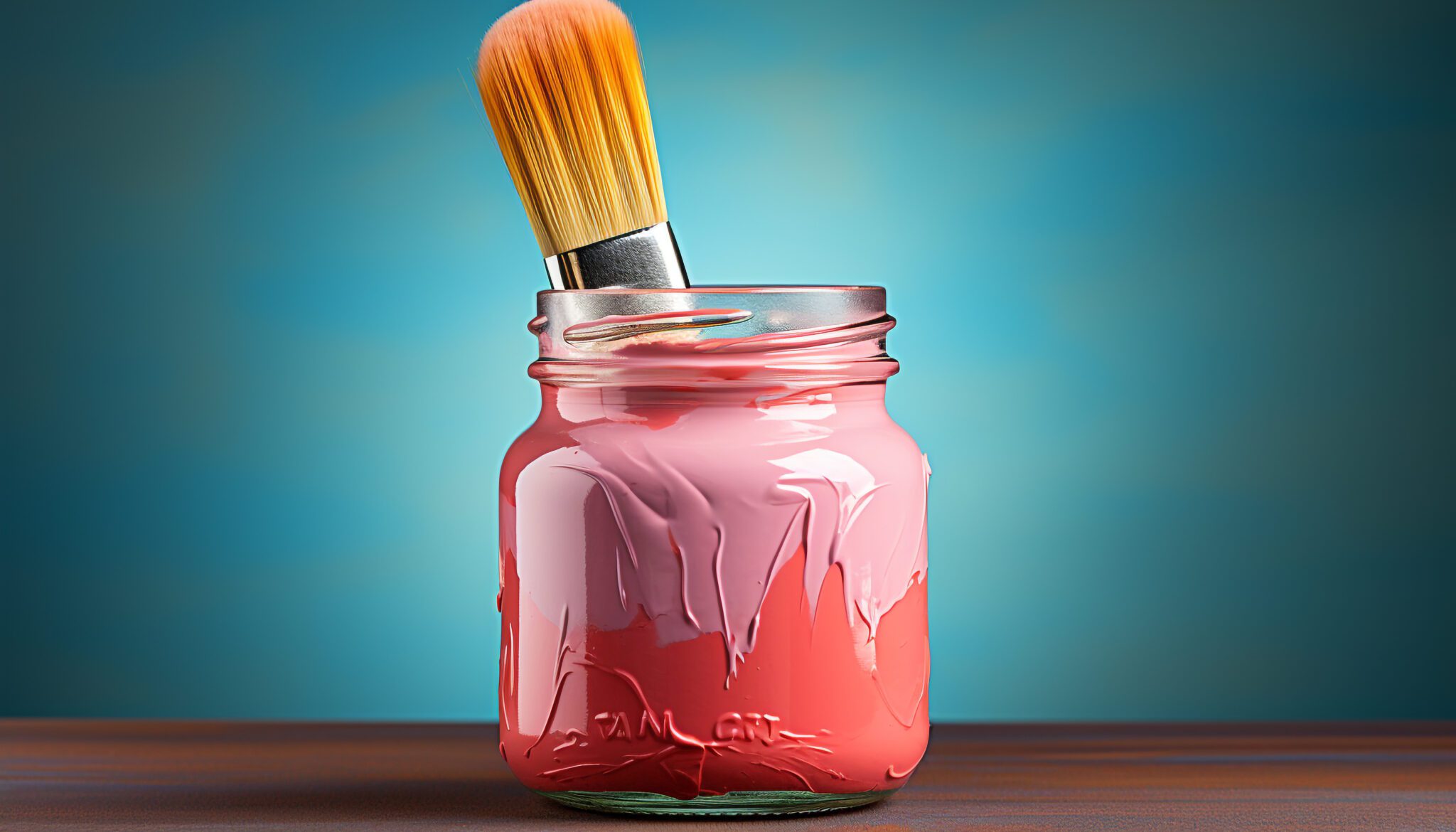In the world of acrylic painting, each brush type serves a unique purpose, contributing to various techniques and styles. Among the most commonly used brushes are the round brush and the flat brush. Understanding their distinct characteristics and applications can help you make informed choices in your artistic process. This guide will compare the round and flat brushes, detailing when to choose one over the other according to your painting needs.
1. Characteristics of the Round Brush
Shape and Design:
- Tapered bristles that come to a point.
- Available in various sizes, from very fine to larger.
- Capable of holding a substantial amount of paint.
Key Attributes:
- Versatility: Ideal for both fine line work and broader strokes, making it adaptable for different painting styles.
- Detail Work: The pointed tip allows for intricate details and accurate application, making it excellent for achieving precision.
- Fluidity: Great for blending and softening edges due to its ability to hold moisture and paint.
2. Characteristics of the Flat Brush
Shape and Design:
- Square, wide bristles that offer a flat edge.
- Available in various widths and stiffness levels.
Key Attributes:
- Bold Application: Designed for applying large amounts of paint quickly and evenly across a surface.
- Sharp Edges: The straight edge of a flat brush allows for creating crisp lines, defined shapes, and flat areas of color.
- Texture Creation: Can be used to create various textures by dragging or tapping the brush onto the canvas.
3. Choosing Between Round and Flat Brushes
Here are considerations that may lead you to pick a round brush over a flat brush, and vice versa, depending on your desired results:
When to Choose a Round Brush
- Detail and Precision:
- Fine Lines: If your project requires delicate line work, such as drawing thin branches, hair, or intricate designs, the round brush is your best bet due to its pointed tip.
- Small Shapes: For precise applications in areas like eyes in portraits or small floral arrangements, the control offered by a round brush is invaluable.
- Blending and Gradient Effects:
- Soft Blending: The round brush excels at blending colors smoothly, especially when transitioning between shades. Its capacity to hold paint and water allows for seamless layering.
- Soft Edges: When striving for a softer appearance, such as in sky gradients or subtle transitions, a round brush can create the desired flow.
- Versatile Shapes:
- Varied Stroke Widths: You can create both thin and thick lines by adjusting the pressure and angle of the brush. This versatility enables a broad range of creative expression.
- Small Areas and Detail Work:
- Tight Spaces: The conical shape of the round brush allows artists to access narrow corners or small spaces without losing control.
When to Choose a Flat Brush
- Bold Color Application:
- Large Areas: If you need to cover large surfaces quickly, such as backgrounds or solid color areas, the flat brush is essential for its wide coverage.
- Vibrant Color Fields: A flat brush excels at applying bold colors in a single stroke, creating vivid fields that add dynamic energy to your painting.
- Crisp Edges and Defined Shapes:
- Sharp Lines: For projects involving clearly defined shapes, such as geometric designs or outlining figures, the flat brush’s straight edge offers precision.
- Texture and Pattern Creation:
- Unique Texture Effects: Use a flat brush to create different textures by dragging, stippling, or scraping. This makes it useful for landscapes, such as depicting grass or rocks.
- Dry Brush Techniques: With the right technique, a flat brush can create interesting textures that enhance visual depth.
- Filling in Areas:
- Blocking in Colors: The flat brush is ideal for quickly filling in large areas of color, making it essential during the initial stages of a painting.
4. Conclusion
Both round and flat brushes have unique characteristics that cater to different painting techniques and styles. Choosing between them depends largely on the specific demands of your artwork:
- For Details and Delicate Work: Go with the round brush to achieve fine lines, blending, and intricate detailing.
- For Bold Coverage and Defined Shapes: Opt for the flat brush to block in color, create edges, and produce textures.
Ultimately, both brush types can complement each other in your creative process, and many artists find that using a combination of both enhances their work’s overall quality and complexity.
Explore our selection of round and flat brushes and other essential art supplies at urartstudio.com to support your artistic journey!
Be sure to visit our online store at https://urartstudio.com/shop/ for a variety of art supplies and tools. Additionally, check out valuable painting tips at urartstudio.com/painting-tips/ and our step-by-step painting instructions at https://urartstudio.com/step-by-step-painting-instructions/ to further enhance your skills.
Keywords: round brush, flat brush, acrylic painting, brush types, painting techniques.
#RoundBrush #FlatBrush #AcrylicPainting #BrushTypes #PaintingTechniques



Leave a Reply
You must be logged in to post a comment.